The Leading Technical SEO Issues That Can Impact Your Rankings
Site Audit Issues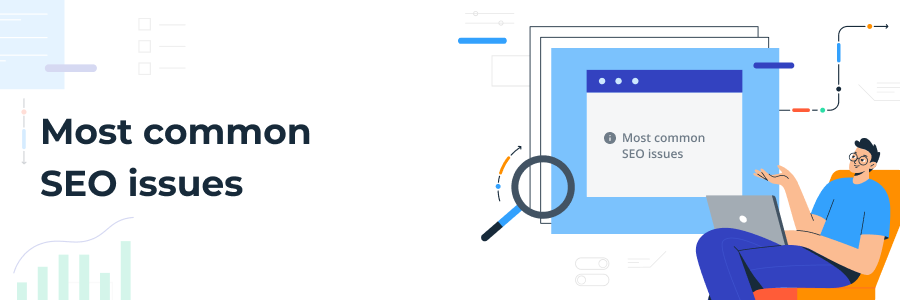
Content:
- What Technical SEO Issue Stands for?
- What Causes Common SEO Problems?
- How to Fix SEO Issues?
- How to Conduct SEO Audit With Netpeak Spider?
- Conclusion
Your website may face various SEO issues: some of them can be easy-going, while others can harm your rankings. If you want to learn more about search engine optimization issues and their SEO fix, use this article as a manual guide.
Read on to detect technical SEO issues, understand why they appear, and see how you can find and fix search engine problems with Netpeak Spider.
What Technical SEO Issue Stands for?
Technical SEO issues are website problems that may harm search engine performance. Such SEO errors are associated with the technical features of a site and may influence how search engines crawl, index, and rank web pages.
Technical SEO issues also create obstacles for users to locate your website or navigate through it, which influences your optimisation and low ranking in search engine results. By solving these issues, you help search engines understand and rank the content on your website correctly.
What Causes Common SEO Problems?
Different factors can lead to search engine optimization issues. The most common SEO issues affecting your rankings include duplicate content, inaccurate canonical tags, broken links, and missed or incorrect robots.txt, among others.
Duplicate Content
If several website pages contain identical or closely related content, search engines may fail to determine which page to show for current queries. Consequently, corresponding pages that contain duplicate content lose their visibility and rankings in search engine results.
Inaccurate Rel=Canonical
Canonical tags help determine which exact content version search engines should index, among all similar pages available on a website. If you don’t use canonical tags properly, search engines might consider duplicate content spam or low-quality and may thus reduce your rankings.
Broken Links
A broken link is a ruined hyperlink that fails to lead to the real page, file, or image. For such cases, the server yields a 404 or 410 response code. The presence of broken links on your website can lower its position in search results and make it undesirable to the bots.
Missing or Incorrect Robots.txt
In your website's root directory, robots.txt contains directives for controlling search engine access to its content. Misformatted or inadvertently blocked robots.txt files cause your website severe crawling, indexing, and visibility issues.
Unresponsive Mobile Interface
Google’s primary goal is to index mobile-friendly pages and perform well on all devices. If your website is not optimized for mobile, it may cause problems with navigation and viewing content on a smartphone screen and lead to high bounce rates and low engagement metrics.
Slow Page Speed
As mentioned above, Google is trying to provide the best user experience possible, and page speed and usability are significant ranking factors. Slow-loading websites can hurt your search engine rankings, website traffic, and conversions.
Wrong Hreflangs
Hreflang tags are essential to multinational corporations because they provide information on which page variant should be presented based on a user's language and location. However, search engines can confuse which version to operate on if a site has several versions in different languages but does not use Hreflang tags.
Missing ALT Attributes
ALT attributes or ALT tags help search engines understand the content of images on a website. Without ALT tags or non-descriptive enough ones, search engines are confused about what is depicted on the image and how relevant it may be to other text.
Lack of XML Sitemaps
An XML sitemap is a file that controls search engine robots on your site. It has a sitemap of major pages that should be crawled. Besides, a sitemap enables search bots to understand your site structure. Consequently, the lack of an XML sitemap or errors in it can lead to problems with content indexing.
HTTPS issues
HTTP status codes show a web server's response to an end user or search engine crawler’s request. If there are security, redirection, or server issues with the site, Google Chrome will let the user know. It will show a warning ‘not secure’ near the domain name or an error message on the page.
When users see this, they will quickly leave your site and go back to SERPs, which damages your rankings.
How to Fix SEO Issues?
Once a developer identified a major technical issues, he needs to fix them, correct? So, let’s check what tools would be helpful here.
Manual Audit of Technical SEO Issues
A complete analysis of a website’s SEO is necessary to identify and rectify issues that affect its search engine rankings with better operation, user experience improvements, and compliance with SEO guidelines. Such a full-scale review lets you detect and prevent new SEO errors from appearing, thus increasing the potential of a website to rank higher in search results.
In a manual check-up, Google your website and the required keywords to see which sites rank in leading positions. Also, make Google Search Console your best friend for website audit. It has a lot of valuable manuals in the Google Search Central Documentations. For quicker orientation, check out our guide on the common SEO problems detected by Google Search Console.
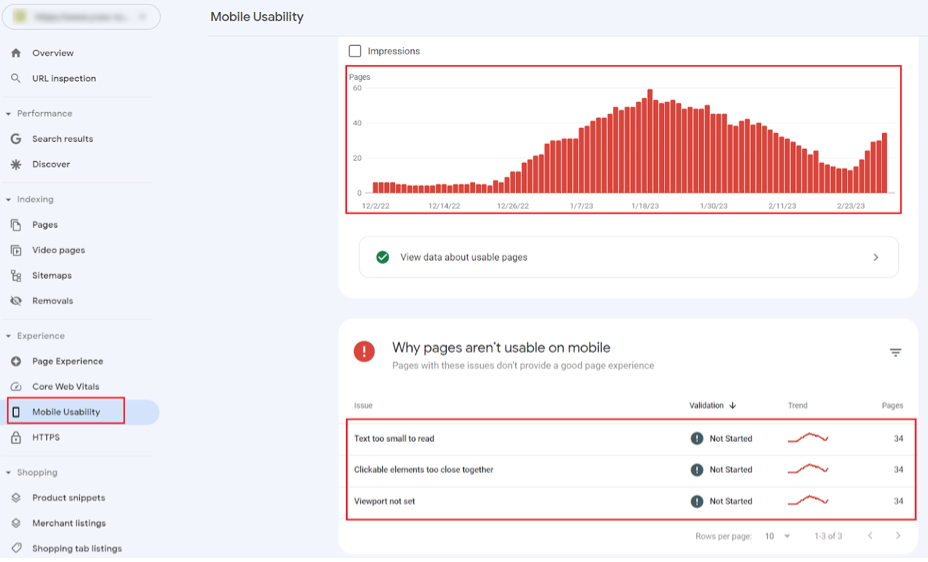
Benefit From SEO Issues Crawlers
There is no doubt that regular website check-ups are necessary. However, numerous search engine problems are almost impossible to check manually (or incredibly time-consuming). Meanwhile, SEO crawlers can do all the work for you, highlighting the detected issues and advising on their possible fix.
At least Netpeak Spider does this! It locates 100+ SEO issues and prioritises them based on colors: Errors come in red, Warnings are colored in yellow, and Notices are in blue. Once you click on any issue, you will receive the full info on the matter with technical improvement advice.
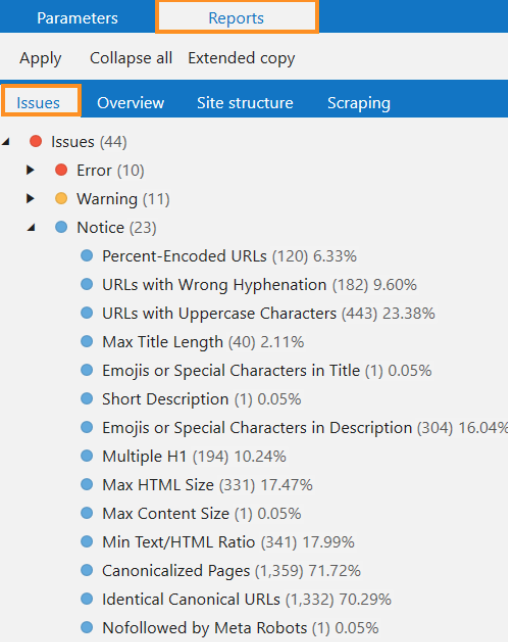
How to Conduct SEO Audit With Netpeak Spider?
A technical SEO audit covers all the website bases. With its help, you can discover which technical SEO issues are most important for prompt adjustments.
With Netpeak Spider, you will have all the necessary features for your website to function seamlessly. It boasts a range of top-notch features for search engine issues detection.
Crawl the Website in Netpeak Spider
To conduct a website check-up in Netpeak Spider, simply insert the preferred website’s address in the 'Initial URL' field. Press on the 'Start' button afterward.

You can check the ‘Dashboard’ reports when the crawling is done. They are very simple to use since they summarize the obtained information and provide a general overview of the audit performed.
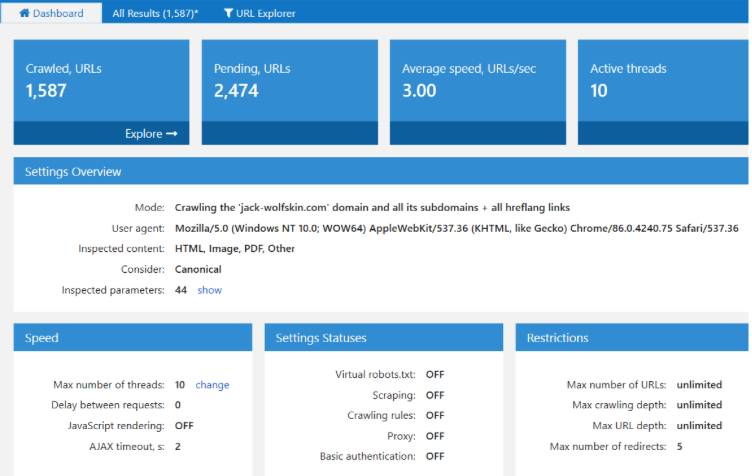
Review of the Detected Issues
After you finish the crawl, you will receive the entire issues report. The ‘Issues’ section is available by clicking on the tab in the sidebar titled “Reports.” The red indicates severe errors, the yellow represents warnings, and the blue stands for notices. Not every notice must be dealt with immediately; some may not pose a significant threat. For example, pages that contain emojis in their description may not necessarily be a problem unless they are wrong. In these instances, the program produces a valuable report.
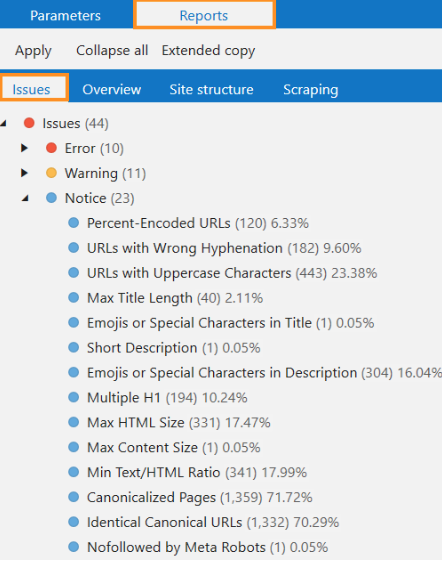
Click on the issue to view its URLs. This will open the ‘URL Explorer’ tab and display all URLs.
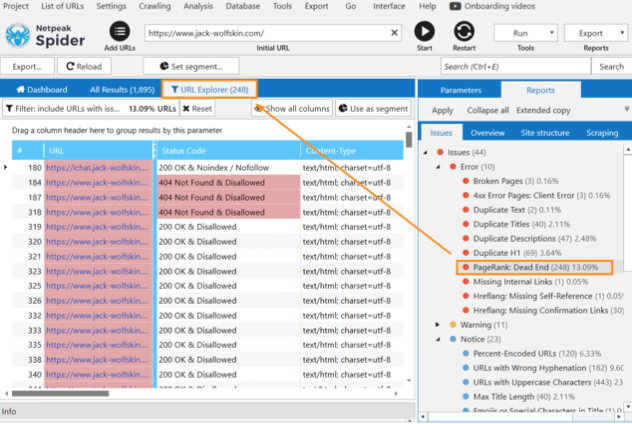
Use the ‘Info’ section to get information on the problem's significance, risks, and solutions. With the left mouse button, pull up the panel and see the basic information and numerous valuable links that will help you get a broader picture of what is happening.
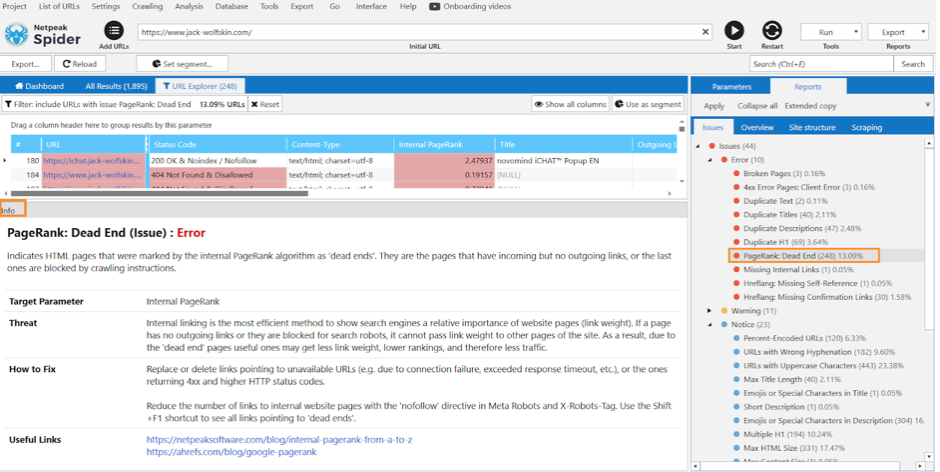
Export Report Dashboards
Diagrams enable you to evaluate a project’s development and decide where your efforts should go for best results. Moreover, the software enables you to export tables in PDF.
With a single click, you can get more specific reports or collect all the data in one folder. To export the filtered results, just click on the ‘Export’ button when viewing data in a table.
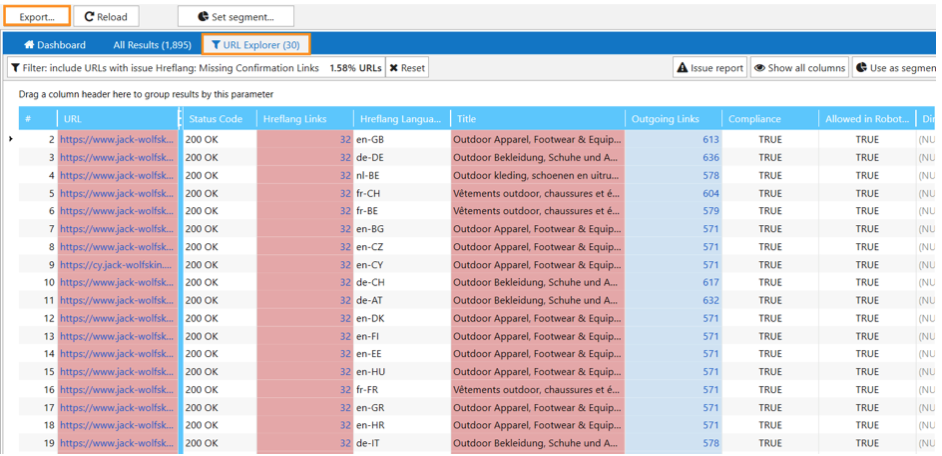
The ‘Export’ menu is also available at the top panel or far right corner. With a single click, you can export different types of reports:
- All issue reports in one table
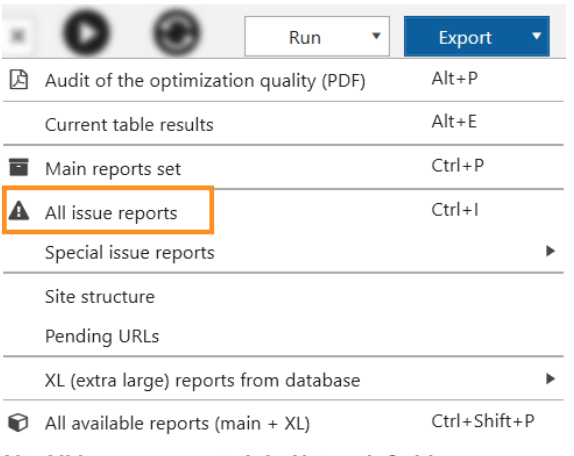
Conclusion
Fixing technical SEO issues is essential for good ranking in search engines. The most common SEO problems are duplicate content, broken links, and mobile responsiveness, along with other negative effects they cause on rankings.
A regular website audit is the key to success. Netpeak Spider is a useful tool for identifying and prioritizing SEO problems. Such fixes make the user experience better, help the crawler, and increase your positions in search results.

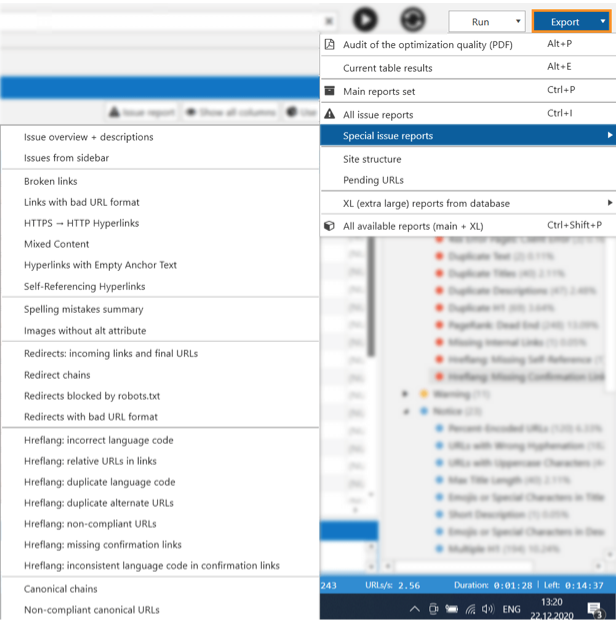
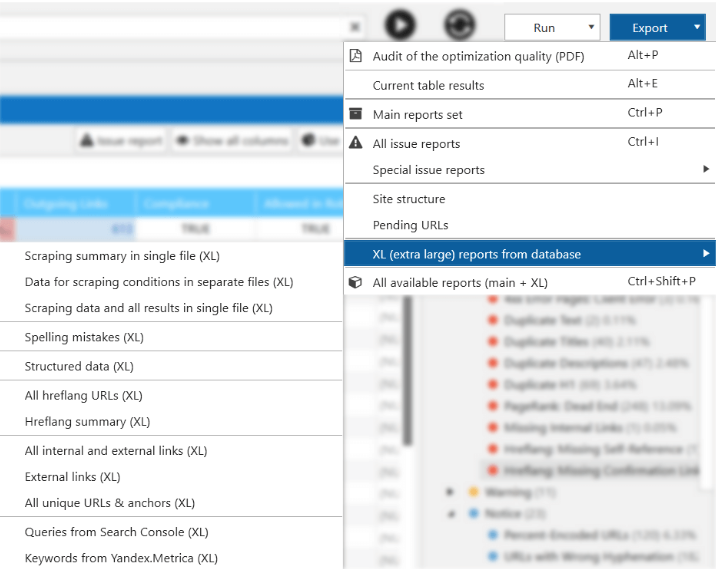


.png)
